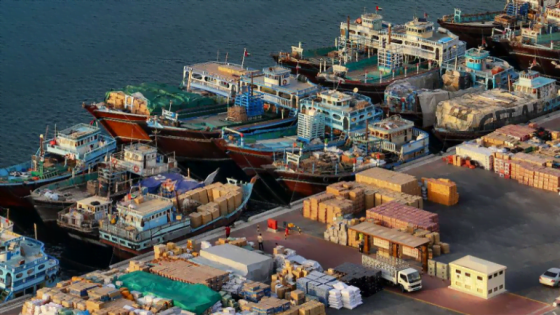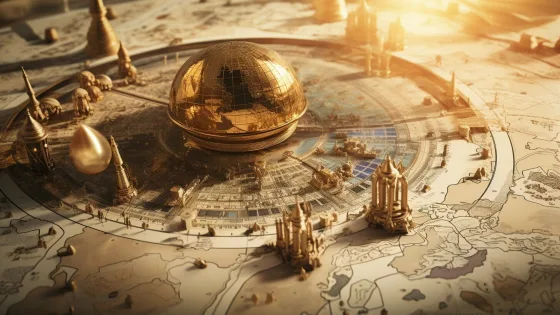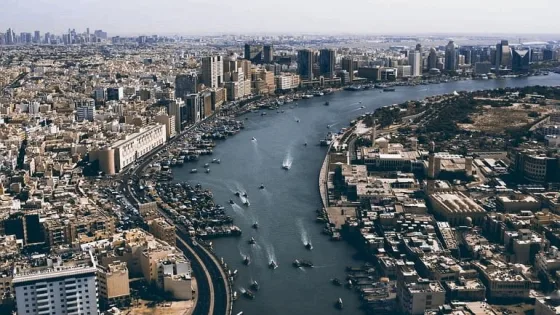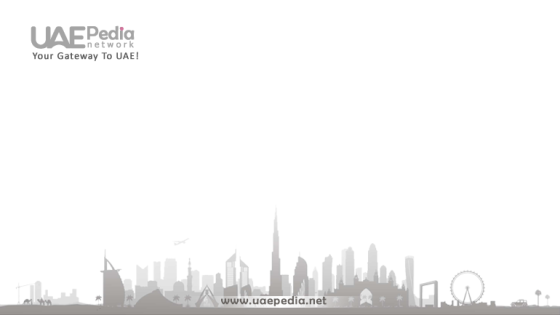Contents
UAE trading history, as the UAE has a rich history in the field of trade, which first appeared in the year 630 AH. As the trade of the UAE merged with the merchants of the Far East from India and China, the trade was also appreciated by the Europeans. Especially the Dutch and the British, so what is UAE trading history, and what was UAE called before?
UAE trading history
It became the city of Dubai A famous trade route linking Oman with Iraq during the fifth and seventh centuries AD. Dubai was famous at that time for pearl hunting, fishing, and boat building. Therefore, the trade routes became famous and ready to receive the Portuguese and Europeans. As the number of the tribe’s members increased. Which enabled them to control the political sphere in Dubai in 1793 AD, the trade routes also gained wide fame.
Where the British were looking to expand their reach; Therefore, they worked to associate with the local rulers. And were able to establish maritime trunks with the sheiks of Dubai. Which led to the name of the region as the Trucial Coast.
UAE history facts developed and started working on its economy. Therefore, it was classified as the main port of the Gulf coast, as the pearl diving trade continued to be the main activity in Dubai. UAE trading history in the eighteenth century also witnessed a massive influx of Iranian merchants and Arab settlers. This led to the imposition of customs duties on the port of the Emirates, known as Linghe Port. So, trade flourished in Dubai.
What was the UAE trade before oil?
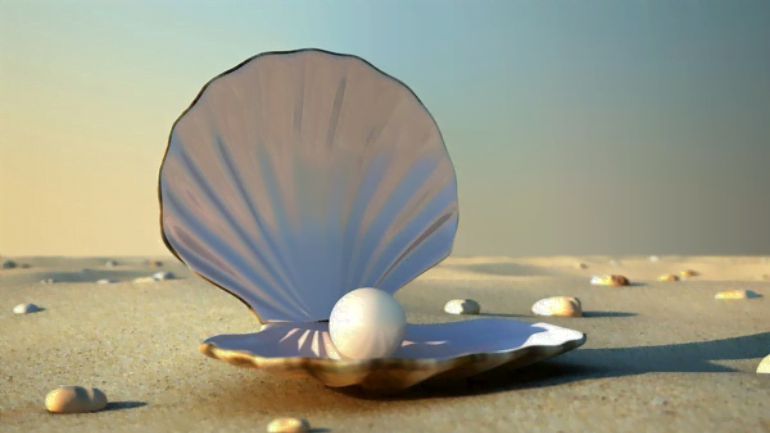
UAE trading history was dependent on the decline of the pearl industry and fishing. But with the beginnings of the discovery of oil in the fifties of the last century near the Trucial States, the economy of Dubai changed. As oil exports began in 1962 AD, the UAE became a tourist and commercial center in all regions. Emirati companies have also invested abroad to expand their commercial activity.
“Read more: Dubai history“
What is the main trade in Dubai?
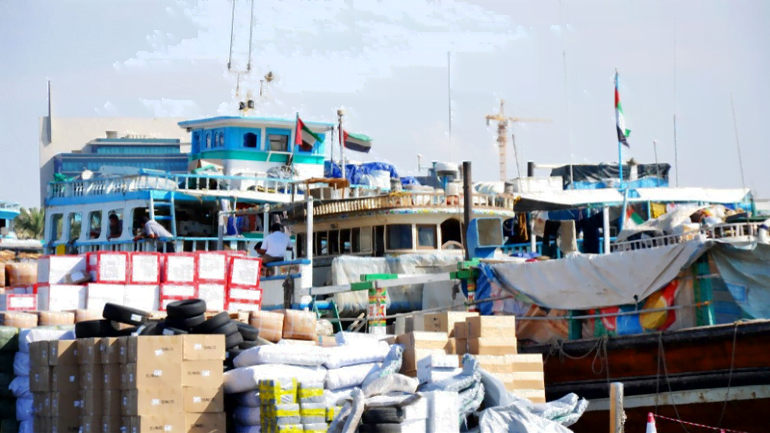
Dubai’s main trading commodities until recently were based on natural gas and crude oil. However, UAE trading history developed in the past decades, and the main export commodities began to include non-oil products.
exports in Dubai
The United Arab Emirates is a member of the World Trade Organization and is a partner to more than 32 countries in various countries of the world. The main export commodities included some crude oil products and natural gas, as well as exporting products and foodstuffs. Dubai also exports minerals such as copper, aluminum, and Japan, South Korea, India, Iran, and Thailand are major export companies.
Imports in Dubai
The United Arab Emirates imports many products from various Arab and non-Arab countries, such as India, Japan, Germany, and the most important imported products are as follows:
- Food.
- Skins.
- Motors.
- electronic test equipment.
- plastic products.
- Precious metals.
UAE trading history has signed many free trade agreements in an attempt to sustain trade in Dubai and all countries. So, Dubai is trying to make the export and import activities more direct. Also, the double taxation treaties are still in effect in the city until now.
“Watch else: Dubai day trips”
Who does the UAE trade with?
The United Arab Emirates is one of the richest countries in the world, and it is considered one of the financial powerhouses in the Arabian Peninsula. It is also one of the largest economic countries in the world, and it is a rich opportunity for countless businessmen and prominent investors. The UAE has achieved milestones that still amaze everyone with its economic value. It also obtained its wealth from various fields and sectors, and it has many trading partners that increase its value, and among these commercial companies are the following:
- China:
China is a strong trading partner of the UAE, due to the strong trade ties throughout history. Where the two countries were able to provide what is best for each other. The products traded between them are textiles, heavy machinery, plastic, and metal products, in addition to chemicals.
- India:
Trading companies have efficient and convenient transportation and supply lines which adds value to the India-UAE partnership. Where the bilateral relations between them are affected as a result of the link between one country and another. It also expects to improve bilateral relations in the coming years with a difference of 11.7% of the main trade in the UAE. Trade between India and the UAE also includes textiles, food, petroleum, and precious metals.
- United States of America:
The United States of America is one of the world’s thriving financial powers. Where it continues to shine and prosper with the bilateral relationship between it and the UAE. As trade between them includes mineral products, transportation, electricity, chemical equipment, and machinery.
- United Kingdom:
The partnership between the UAE and the UK continues to grow every year, with each country contributing to the other’s economy. The partnership between them is represented in food products, precious metals, transportation devices, gold, and small machinery.
- Germany:
Germany is one of the leading countries in innovations and progresses all over the world. It is also considered one of the most important shareholders and suppliers in the financial affairs of the United Arab Emirates. Where each country strives to achieve the best, trade between them also includes chemical products, electronics, minerals, and machinery.
“See more: History of UAE flag”
Customs procedures for commercial companies in Dubai?
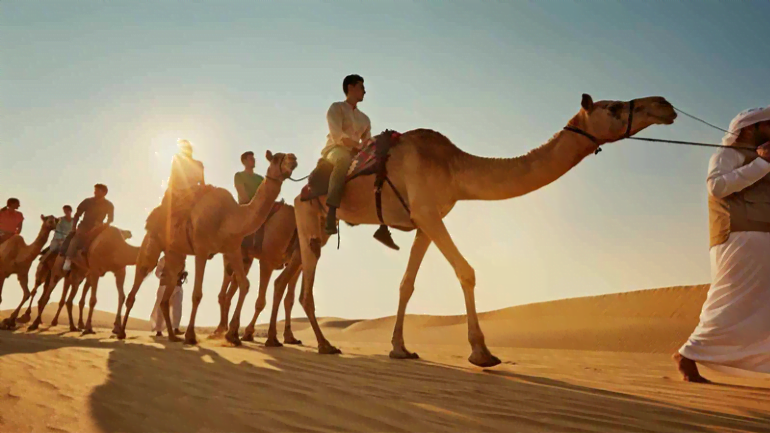
Many entrepreneurs benefit from tax exemptions and various advantages in free trade zones by investing in commercial activities. Represented in marketing products legally in the UAE or abroad. as companies Export and import. Therefore, you must know the legal legislation and submit to the customs the following papers:
- Commercial license for issued companies.
- Submission of documents to prove ownership of the goods.
- Delivery of invoices for the sale of goods.
- Submission of a declaration document containing import and export details.
“Read more: UAE freelance visa”
Is Dubai tax-free?
Expats want to come to the city of Dubai regardless of the high quality of life, and this is because the United Arab Emirates is exempt from taxes. As there is no tax on the income generated in Dubai. Also, there are no taxes on the majority of sales of services and goods. Therefore, UAE trading history was famous for not imposing any kind of direct or indirect commercial taxes on citizens.
“Watch else: Discover Bargain Prices at Dubai Outlet stores“
Logistics services in Dubai
UAE tribes history distinguished roads in land, air, and sea transport, and is one of the largest logistics centers on the international level. Where foreigners and local businessmen dealing with commercial activities were able to take advantage of the advanced and modern transport structures to facilitate the process of international partnership. UAE trading history was also greatly sustained as a result of the export and import sector, at a rate of more than 30%.
What did UAE trade in the past?
Trade in the past contained crude oil for machinery, vehicles, transportation equipment, and food.
When did trade start in Dubai?
The history of Dubai dates back to 3000 BC or the Bronze Age. Since the beginning of the fifth and seventh centuries AD.
When did UAE become so rich?
Dubai became rich by about 28 times from 1981 to 2012.
UAE trading history witnessed many different developments from the beginning of the history of the United Arab Emirates to the present time. Regional trade, the local economy and the international trade center deteriorated before the advent of oil. And it flourished with the expansion of local and non-local businesses to expand trade across borders in the history of the Middle East. As a development of UAE from 1971 to 2020.
